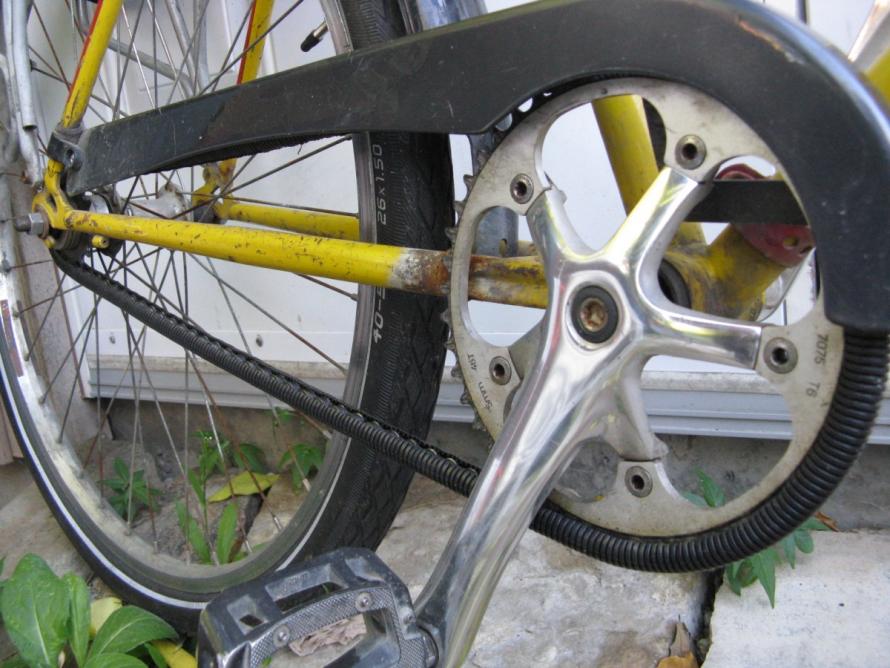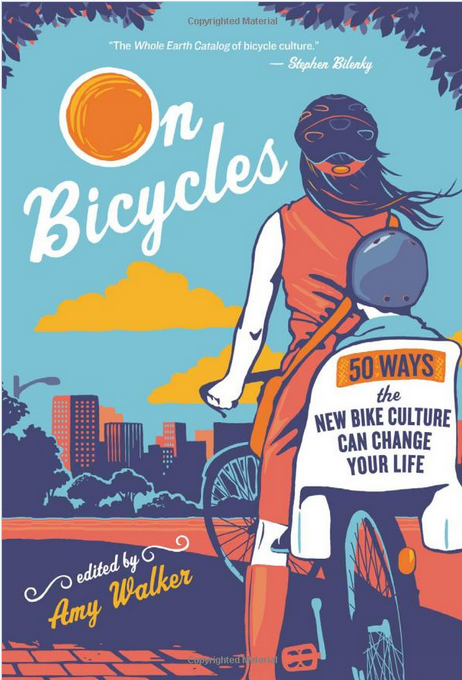On Bicycles: 50 ways the new bike culture can change your life, edited by co-founder and former creative director of Momentum Magazine, Amy Walker, has high ambitions to be a volume that you can pick up and learn something new about bicycles and how it can fit into your life (if it hasn't already). The book is a collection of 50 essays (hence the title) by 33 contributors that covers the bases from bike style to internally-geared hubs to understanding "fixies" to cycling and Buddha to designing cities for bikes. The book is more about breadth than depth. You'll get a good overview of many topics to help people learn more about cycling and its growth in North America.
In her position at Momentum, Amy has met with a wide range of people involved in cycling in some way or another. I've had the pleasure of sitting down with her and colleagues at Momentum when they came through town and always found Amy - and others at Momentum - to be full of energy and passion for their unique position as both chronicler and driver of cycling "culture". You can see that reflected in this video in her speech on cycling.
Cycling, and a "culture" surrounding it, has been expanding across North America in cities like New York, Vancouver, Portland, Chicago, Montreal and Toronto. "Cycling in New York City alone", the publisher claims, "is up 109 percent since 2006." More and more people are riding bikes as daily transportation. "Whether people are riding folding bikes to the train, or slipping through traffic on tricked-out fixed-gears, or carrying children and groceries on their utility bikes, bicycles are making urban life more dynamic, more enjoyable — simply better. People are giving up their cars. Cities are holding car-free street festivals for walking and biking. Dedicated bike lanes and bike parking are taking the streets back from cars. Bikes in general are becoming a bigger part of daily life for a lot of urban dwellers."
On Bicycles covers a large range of topics. it's impossible to be exhaustive but here's a selection:
- artsy creation of "freak bikes" (such as tall bikes and choppers) and why the heck anyone would want to ride them
- why fixies aren't all that dangerous (just make sure you have a front brake in addition to being able to stop the rear wheel) and why they're nothing new (fixed gear bikes have been around since the beginning of bicycles and almost all were not track bikes), as explained by Toronto bike shop owner Martin Neale of Hoopdriver Bicycles.
- why cycling is great for business and the economy (provides $90 million to Portland's economy alone and can help save businesses money)
- a look at specific technology that benefits urban riders such as cargo bikes, internally-geared hubs, and folding bikes (all which have been around for decades but getting even better and more popular in North America)
- a how to do bicycle advocacy (1. define the issue, 2. set goals, 3. assess resources, 4. strategize (who are the decision makers?), 5. craft your message, 6. develop tactics, 7. manage resources). Read Kristen Steele's articles for more.
- how automobile is a money-sucking trap for many ($5000 annually in depreciation, insurance, gasoline, maintenance / repairs, parking) and how cycling, transit and walking can save ourselves in additional costs to our health care systems, sprawling cities, congestion, pollution and climate change
- why car traffic counter-intuitively disappears rather than clog up other roads when lanes or streets are removed
- on cyclovías (car-free street celebrations) and Bike Parties as ways to expand on the fun of riding a bicycle by doing it in big groups with minimal car traffic
- on North America's many earn-a-bike programs and bike collectives that provide skills training and affordable refurbished bikes to many
Why aren't more people cycling if it's so great? Amy notes that "People often don’t bike because they think it is dangerous though it is not. People think that biking is physically difficult and you need to be an athlete to bike to work (bicycling is the most efficient form of travel and many people who bike to work never even break a sweat!). People perceive cyclists as unusual and this is true – cyclists are not the norm – but as more people start cycling for transportation, everyday biking is becoming more commonplace every year. This is a positive shift and a very important one: people are often reluctant to do something different but once they see their peers, friends and family members doing it, it feels a bit safer and easier for them to try it. "
On Bicycles is a useful book for helping North Americans shift their perceptions by seeing that cycling doesn't take much effort and can provide so much benefit for ourselves and those around us. Thanks for pulling together all the great articles Amy!


